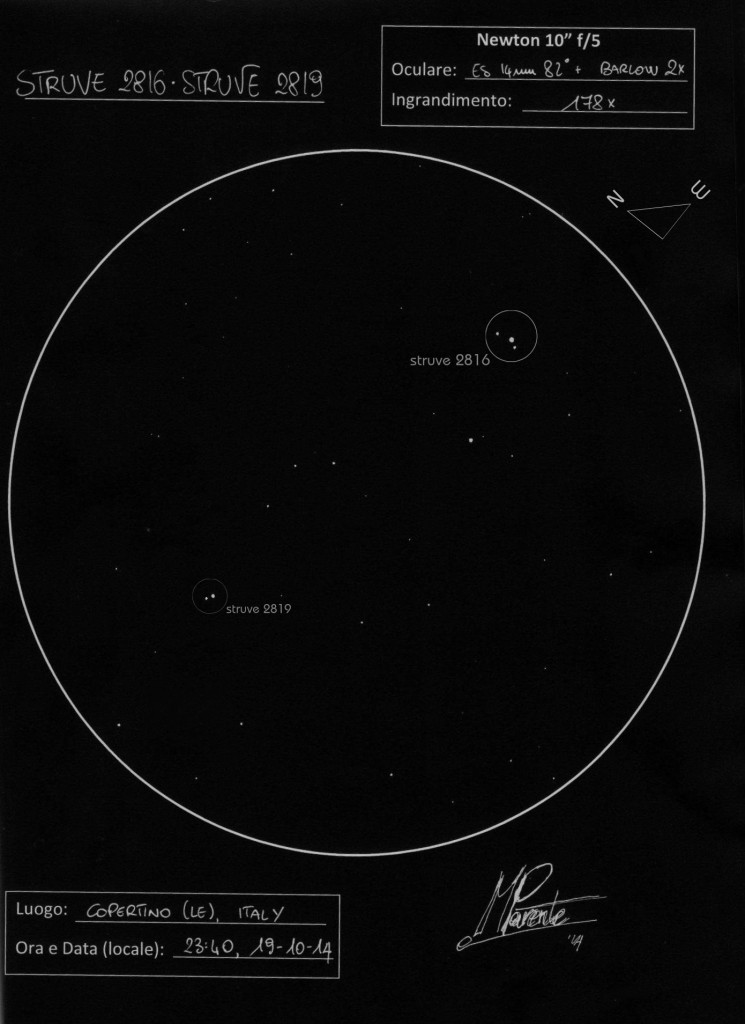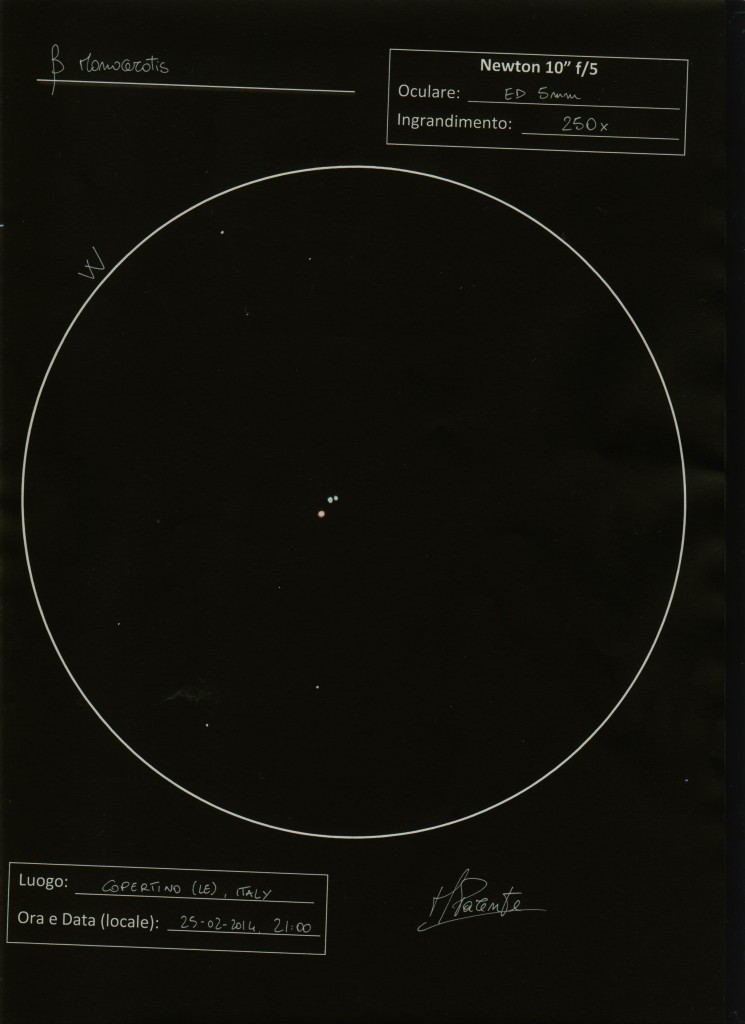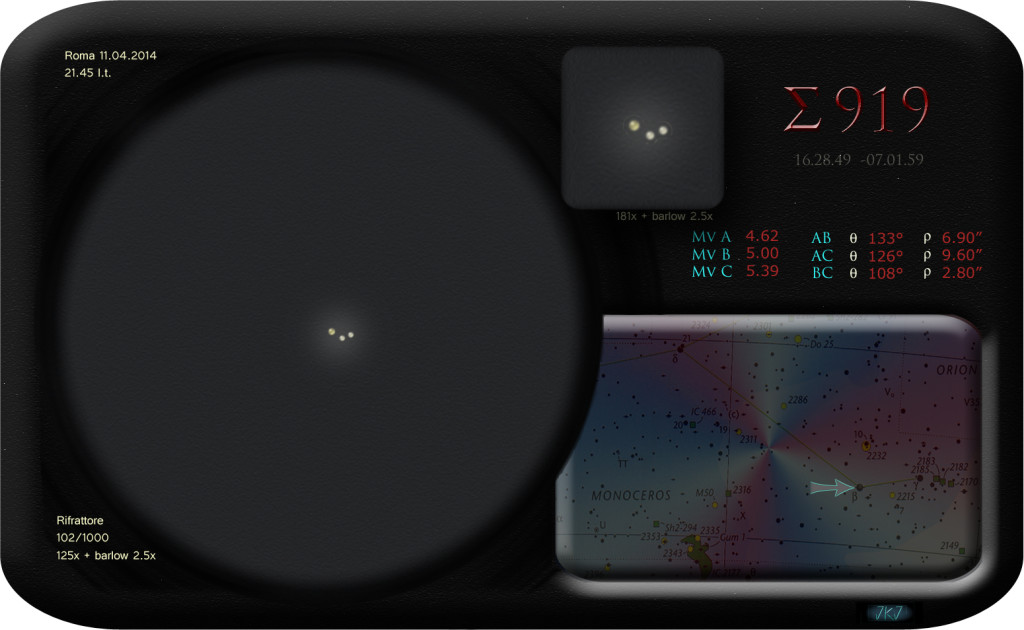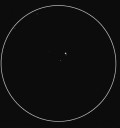
Hi Asod! My sketch is about a triple and a double stars, in the same field. The triple is STRUVE 2816 and the double STRUVE 2819 and they are both part of the wide open cluster “Trumpler 37″ in Cepheus. I observed the two multiple systems with my Dobson 10” f/5 with a 14mm eyepiece, 82° for a 180x magnification. The observation is great!
Object Name: STRUVE 2816 and STRUVE 2819
Object Type: Triple star, Double star
Location: Copertino (LE), ITALY
Date: 23:40, 19-10-2014 (Local)
Media: India Ink on white paper, inverted






